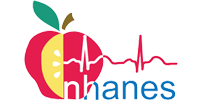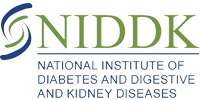Client Projects
A
Australian Imaging, Biomarkers and Lifestyle Flagship Study of Ageing (AIBL)
AIBL is a large scale cohort study that aims to discover which biomarkers, cognitive characteristics, and health and lifestyle factors determine subsequent development of symptomatic Alzheimer’s Disease (AD). AIBL is the largest study of its kind in Australia, with more 1000 participants aged 60 and over. ActiGraph devices were used to measure physical activity for seven days on a subset of the cohort.
Avon Longitudinal Study of Parents and Children (ALSPAC)
The Avon Longitudinal Study of Parents and Children (ALSPAC) is a large scale longitudinal study of children born in Avon during the early 1990’s and has been established as a resource for the study of genetic and environmental factors contributing to long term health and development. The ALSPAC research team, based at the University of Bristol, initially recruited a sample of more than 14,000 pregnant women, and the children arising from these pregnancies have been followed intensively over the last two decades. At ages 12 and 14, the research team performed objective activity assessments on more than 4500 children in the cohort using ActiGraph activity monitors, providing evidence that being active in childhood protects against later obesity.
C
Child Heart and Health Study in England (CHASE)
The Child Heart And Health Study in England (CHASE) is a detailed investigation of patterns of risk factors for cardiovascular disease and type 2 diabetes of UK children conducted by a research team from St. Georges University of London. ActiGraph devices were used to measure physical activity in a subsample of 2000 primary school children.
Childhood Obesity Prevention and Treatment Research (COPTR)
The Childhood Obesity Prevention and Treatment Research (COPTR) program is among the first long-term obesity prevention and treatment research studies in children. A consortium of four sites, Vanderbilt University School of Medicine, Case Western Reserve University, Stanford University and the University of Minnesota, Twin Cities, is conducting two obesity prevention and two obesity treatment multi-level randomized trials over the course of seven years. ActiGraph devices are used to measure physical activity of parent-child dyads and adolescents with a total sample size of approximately 2800 participants.
E
European Youth Heart Study (EYHS)
The European Youth Heart Study is an international study aiming to establish the nature, strength and interactions between personal, environmental and lifestyle influences on cardiovascular disease risk factors in European children. This cross sectional study collected physical, biochemical, lifestyle, psychosocial and sociodemographic data on boys and girls aged 9 and 15 years in four European countries. As part of the lifestyle assessment, ActiGraph devices were used to collect physical activity data over the course of four days on more than 2700 study participants.
I
Identification and Prevention of Dietary- and Lifestyle-induced Health Effects In Children and Infants (IDEFICS)
Identification and prevention of Dietary- and lifestyle-induced health EFfects In Children and infants is a large-scale European study investigating the different factors influencing overweight and related disorders in children aged 2-9 across 11 European countries. Funded by the European Commission under the 6th Framework Programme and coordinated by the Bremen Institute for Prevention Research and Social Medicine, the IDEFICS project conducted a cross-sectional baseline assessment of dietary, lifestyle, psychosocial, biochemical and genetic factors in over 16,000 children. Targeted interventions were developed and implemented, and a follow-up survey assessed the impact of dietary and lifestyle changes on body weight and other health parameters.
The IDEFICS research teams used ActiGraph activity monitors to collect physical activity and combined physical activity and heart rate data on a subsample of approximately 7500 IDEFICS participants.
International Physical Activity and the Environment Network Study (IPEN)
The International Physical Activity and the Environment Network Study aims to assess the strength of association between detailed measures of the neighborhood built environment, physical activity, and body mass index (BMI). Funded by the National Institutes of Health and the National Cancer Institute, the IPEN study has sites in 12 countries with a centralized pool of ActiGraph participant data for over 8000 children, adults and seniors.
International Study of Childhood Obesity, Lifestyle and the Environment (ISCOLE)
This collaborative study between Pennington Biomedical Research Center and the Coca-Cola Company examines the influence of behavioral, physical, social, and policy environments on the relationship between lifestyle characteristics and weight gain in school aged children. ISCOLE study teams are collecting data from 500 children in each of 12 countries across North America, Latin America, Europe, Eurasia, Africa and the Pacific. ActiGraph’s GT3X+ devices are being used to objectively measure 24 hour activity and sleep/wake behavior for 7 days in all study participants.
Iowa Bone Development Study
NIH-funded since 1998, this University of Iowa longitudinal study is following ~500 males and females to examine how genetics, diet, and physical activity influence the trajectories for bone strength from childhood to young adulthood (age 5 to 19 years). We are the first lab in the nation to use Actigraph objective monitoring of physical activity in relationship to bone outcomes and continue to lead in elucidating dose-response associations including the effects of physical activity on geometry and micro-architecture of bone.
L
Lifestyle Interventions and Independence for Elders Study (LIFE)
The Lifestyle interventions and Independence for Elders Study phase 3, multi-center randomized controlled trial assesses the long terms effects of physical activity interventions on mobility in a sample of over 1600 sedentary senior adults. ActiGraph devices are used to objectively measure physical activity in study participants across 8 sites in the United States.
M
Millennium Cohort Study (MCS)
The Millennium Cohort Study (MCS) is a multi-disciplinary research project following the lives of 19,000 children born in the United Kingdom in 2000 and 2001. The most recent of Britain’s world-renowned national longitudinal birth cohort studies, the MCS has been tracking the Millennium children through their early childhood years and plans to follow them into adulthood. ActiGraph activity monitors were used in the most recently completed survey to measure physical activity in more than 12,000 7 year old children in the cohort.
N
NAKO Health Study
The NAKO Health Study is nationwide, long-term population study aiming to explain the causes and identify risk factors for chronic diseases. In this study, 200,000 people aged 20-69 years from across Germany will receive medical exams, submit blood samples, and undergo lifestyle assessments, including objective activity measurement with ActiGraph devices.
National Health and Nutrition Examination Survey (NHANES)
The National Health and Nutrition Examination Survey (NHANES) is an ongoing program of studies conducted by the National Center for Health Statistics assessing the health and nutritional status of adults and children in the United States. A nationally representative sample of approximately 5000 people are examined each year, and the survey is responsible for producing vital health statistics for the nation, including the prevalence and risk factors for major diseases. ActiGraph devices were used to collect physical activity data on approximately 15,000 subjects aged 6 years and older in the 2003-2004 and 2005-2006 cycles of the survey. The most recent 2011-2012 cycle was the first to monitor participants for 24 hours a day, resulting in one of the largest samples of sleep data ever collected.
P
PROactive COPD Project
PROactive is a European project funded by the Innovative Medicines Initiative (IMI) and guided by a consortium made up of 19 partners, including academic institutions, a small-to-medium sized enterprise, patient organizations and eight major pharmaceutical companies. The PROactive project aims to develop new tools that will enable patients, their doctors and clinical researchers to accurately assess the improvement or deterioration of Chronic Obstructive Pulmonary Disease (COPD). ActiGraph devices were selected for use in the PROactive project after undergoing stringent testing for both accuracy and usability, and they are currently being used to obtain a comprehensive physical activity overview in 250 COPD patients enrolled in the study.
Personal and Environmental Associations with Children’s Health Project (PEACH)
The aim of the PEACH Project is to investigate determinants of physical activity and eating behavior in children in relation to their neighborhood and the built environment, with a particular focus on changes in physical activity levels from primary to secondary school. Conducted by a research team at the University of Bristol and funded jointly by the National Prevention Research Initiative (NPRI) and the World Cancer Research Fund (WCRF), the PEACH project involved more than 1300 children aged 10 years, who were monitored for one week using ActiGraph activity monitors.
Q
Quebec Adipose and Lifestyle Investigation in Youth (QUALITY)
The QUALITY study seeks to increase understanding of the natural history of cardiovascular disease risk factors and Type 2 diabetes in children. This study involves a cohort of 633 children and both biological parents with at least one of the parents suffering from obesity. The children, who were 8 to 10 years old at the time of recruitment, will be monitored until the age of 18. The research project examines the natural history and determinants of cardiometabolic risk factors, impact of built environment on cardiometabolic risk factors, dental health and cardiovascular risk, and the relationship between stress and metabolic syndrome. ActiGraph devices are used to measure the children’s physical activity for 7 days following each clinic visit. Findings from the QUALITY study will lead to the development of more relevant and effective prevention and treatment programs.
R
Raine Study
The Western Australian Pregnancy Cohort (Raine) Study is one of the largest successful prospective cohorts of pregnancy, childhood, adolescence and now early adulthood to be carried out anywhere in the world. Established between 1989 and 1991, 2900 pregnant women entered the study and 2868 live births were recruited into the cohort. Current research on the young adult cohort includes the use of ActiGraph GT3X+ devices to capture activity and sleep measures, which provides insight into the physical activity behavior of young adults in Australia and may offer clues into the development of chronic disorders associated with a sedentary lifestyle.
T
T he Environmental Determinants of Diabetes in the Young Study (TEDDY)
The aim of the TEDDY study is to identify the causes of type 1 diabetes mellitus through the investigation of environmental and genetic triggers that cause high risk children to develop diabetes. A consortium of six Clinical Centers throughout the United States and Europe has been created to develop and carry out studies on a proposed sample of 7800 neonates with a predetermined type 1 diabetes risk. The participants will be followed every three months until age 4 years and then every six months until the age of 15.
Transdisciplinary Research on Energetics and Cancer (TREC)
The Transdisciplinary Research on Energetics and Cancer (TREC) initiative is a major scientific research effort aimed at reducing cancer linked with obesity, poor diet, and low levels of physical activity. Established by the National Cancer Institute (NCI) in 2005, current TREC research centers are located at Harvard University, University of California-San Diego, University of Pennsylvania and Washington University in St. Louis with the coordination center at Fred Hutchinson Cancer Research Center. ActiGraph devices have been used extensively to capture objective information about physical activity and sleep behavior in adults and children in numerous studies under the TREC initiative.
Trial of Activity for Adolescent Girls (TAAG)
The Trial of Activity for Adolescent Girls (TAAG) is a randomized, multi-center field trial of 36 middle schools with the goal of reducing the decline in physical activity in adolescent girls conducted between 2003 and 2006. Its primary aim was to determine if an intervention that links schools to community organizations reduces the age-related decline in moderate to vigorous physical activity (MVPA) in middle school girls. Funded by the National Heart, Lung, and Blood Institute of the National Institutes of Health, TAAG involved a sample of more than 8700 sixth and eighth grade girls, each of whom were assessed for one week using an ActiGraph activity monitor.
W
Women’s Health Study
This landmark study conducted by Brigham and Women’s Hospital and Harvard Medical School began in 1993 as randomized trial of low-dose aspirin and vitamin E supplementation for cardiovascular disease and cancer prevention in nearly 40,000 female health professionals aged 45 and older. The trial concluded in 2004, and the WHS has now evolved into one of the largest and longest-running observational studies of women’s health in the U.S. An ancillary study examining physical activity and health outcomes is currently underway involving approximately 30,000 women from the original trial. ActiGraph GT3X+ devices are being used to objectively measure physical activity for 7 days in study participants.

















